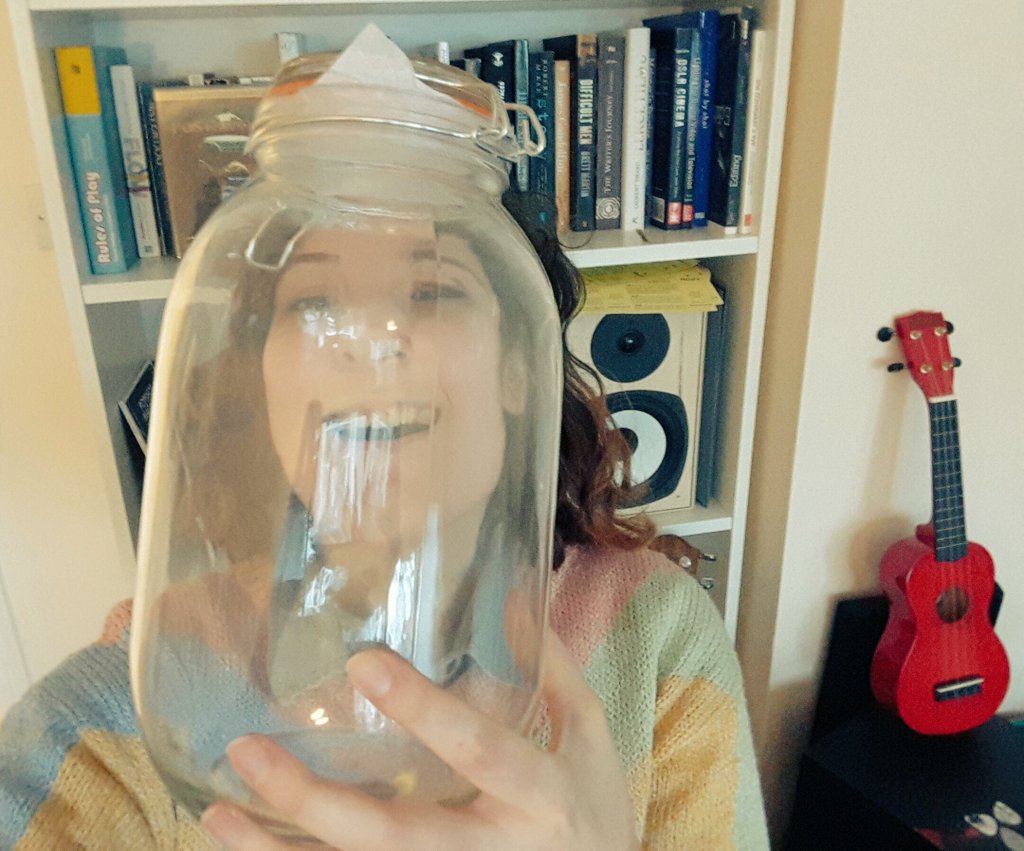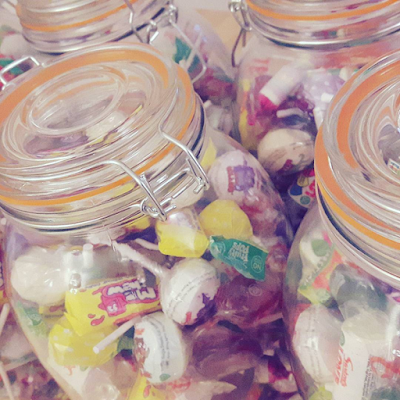For those of you to whom this is news, I started this January working at GamesAid, a UK video games charity who help disadvantaged and disabled children and young people. What originally started as an intern position got upped to the fancy name of Operations Executive - a title I'm still warming up to. Currently I am their only employee, surrounded by a circle of very talented trustees who volunteer their time to the cause. They all represent the best of the UK video games industry and they are also all inspiringly lovely.
To celebrate I decided to organise my own fundraising event for GamesAid. The Global Game Jam was around the corner and inspired by Matt's "Lollies for Lolly" event, I pitched "Jam Jar at the Global Game Jam" to Ian and Matt, Chair and Vice-Chair of GamesAid. With their blessing and support, I began to contact the organisers of Global Game Jam sites across London and then further across the UK.
The pitch was simple: We will place jars of candy at Global Game Jam sites and offer the sweets to jammers. In exchange for the candy, they can place a donation towards GamesAid.
The execution was difficult. First, I had to get GGJ sites on board. Up to a day before the GGJ began, I was emailing back and forth with sites who jumped in at the last moment, arranging meetings and transporting more jars with candy. In the end all GGJ sites within Greater London participated:
- SAE Institute London
- City University London
- London Metropolitan University
- Popped
- Goldsmiths University
- Brunel University
And we even had some engagement from further afield, from individuals that decided to run their own Jam Jar:
- Staffordshire University
- Warwick University
- Brighton
That is 9 sites out of 42 sites across the UK, one in every five sites participated. Not bad for a first time event.
I ordered six jars, a set of fliers I designed for the event, and Matt kindly ordered 10kg of candy for me. With all the materials set and ready to distribute and six sites to distribute them to, I began the biggest pinball game of my life. I was the pinball and London the pinball machine.
There was a lot of walking. In fact 71.87 km of it (more or less the equivalent of walking from Houses of Parliament to Heathrow Airport then further out until you are standing, slightly confused, just outside of Oxford). I sat with jars of candy in buses, tubes and overground trains, sandwiched between confused tourists and stirred by commuters. I met many wonderful faces, all who were eager to collaborate with GamesAid, and offered candy to many more.
During the Saturday of the Global Game Jam, I even decided to bake some cupcakes for the lively jammers at City University London. They came out delicious! In exchange they donated generously towards GamesAid and even showed me their games. Some of my favourite were: Alien Growth and The Secret Handshake Society.
On the last day, Des and I visited the SAE Institute where I walked around the building offering more candy. The jammers were rushing to finish off their games yet still welcomed a moment to munch on a sweet and give to GamesAid. Des gave a cheerful thank you to all the jammers at the end of the night, then we all got to play the wonderful games. Some of my favourite: Solstice and Cracked Up.
There are so many thank yous to give out! All the wonderful trustees of GamesAid for giving me a hand (and offering me the opportunity to work for them!), the site organisers in London for going that extra mile for GamesAid, those individuals outside of London for setting up their own Jam Jars, and of course the Global Game Jammers who donated towards GamesAid. All in all, we managed to raise over £200! Thank you!
To become a member of GamesAid and keep up with our events: check out the website or follow us on twitter.
Finally, here are some wonderful images people sent GamesAid from across the UK.

























